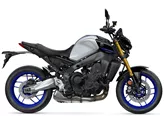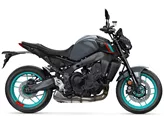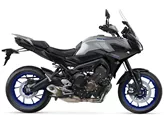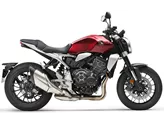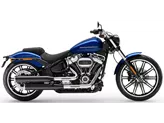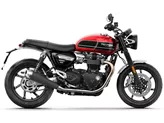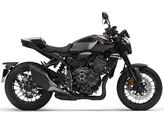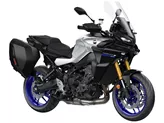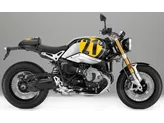Kawasaki Z900 RS 2018 vs. Yamaha MT-09 2016

Kawasaki Z900 RS 2018

Yamaha MT-09 2016
Overview - Kawasaki Z900 RS 2018 vs Yamaha MT-09 2016
The Kawasaki Z900 RS 2018 and the Yamaha MT-09 2016 are both naked bikes that offer powerful engines and sporty riding experiences. However, there are some notable differences between the two models.
In terms of engine specifications, the Kawasaki Z900 RS 2018 is equipped with a 948cc inline-four engine that produces 111 horsepower and 98.6 Nm of torque. On the other hand, the Yamaha MT-09 2016 features an 847cc inline-three engine that delivers 115 horsepower and 87.5 Nm of torque. Both engines are capable of providing exhilarating acceleration and top speeds, but the Kawasaki Z900 RS has a slightly higher power output.
In terms of suspension, the Kawasaki Z900 RS 2018 is equipped with an upside-down telescopic fork at the front, while the Yamaha MT-09 2016 features a telescopic fork. The upside-down fork on the Kawasaki provides better stability and control during aggressive riding, while the telescopic fork on the Yamaha offers a more comfortable ride.

Kawasaki Z900 RS 2018
The chassis of the Kawasaki Z900 RS 2018 is made of steel and has a tubular frame, which provides a sturdy and stable platform for the bike. On the other hand, the Yamaha MT-09 2016 has an aluminum frame with a twin tube design, which offers a good balance between rigidity and weight.
Both bikes are equipped with double disk brakes at the front, which provide excellent stopping power. The front tire width and diameter are the same for both models, with a width of 120mm and a diameter of 17 inches. The rear tire width and diameter are also the same, measuring 180mm and 17 inches respectively.
In terms of dimensions and weights, the Kawasaki Z900 RS 2018 has a wheelbase of 1470mm and a seat height of 835mm. It has a kerb weight of 215kg with ABS and a fuel tank capacity of 17 liters. On the other hand, the Yamaha MT-09 2016 has a slightly shorter wheelbase of 1440mm and a lower seat height of 815mm. It has a kerb weight of 191kg with ABS and a fuel tank capacity of 14 liters.
In terms of strengths, the Kawasaki Z900 RS 2018 offers a powerful and smooth engine, good looks, a comfortable seating position, and balanced handling. It is easy to ride and provides a stable and controlled experience. On the other hand, the Yamaha MT-09 2016 boasts a wonderfully powerful three-cylinder powerplant, three power modes, a fully adjustable chassis, and a quickshifter as standard. It also has a sporty upright seating position, good brakes, aggressive looks, and traction control.

Yamaha MT-09 2016
However, both bikes have their weaknesses. The Kawasaki Z900 RS 2018 lacks a shift assistant, making gear changes less seamless compared to some other bikes in its class. It is also heavier than other retro bikes in its class, which may affect maneuverability. Additionally, the seat on the Kawasaki may be a little too soft for long tours, and it lacks wind protection.
On the other hand, the Yamaha MT-09 2016 has a saddle that may be too hard for long tours, which could lead to discomfort. The license plate holder on the swingarm also offers less splash protection compared to a conventional one, which may result in more dirt and debris hitting the rider.
In conclusion, both the Kawasaki Z900 RS 2018 and the Yamaha MT-09 2016 are impressive naked bikes with their own strengths and weaknesses. The Kawasaki offers a powerful and smooth engine, comfortable seating position, and balanced handling, while the Yamaha boasts a powerful three-cylinder engine, adjustable chassis, and sporty seating position. Ultimately, the choice between the two models will depend on the rider's preferences and priorities.
Technical Specifications Kawasaki Z900 RS 2018 compared to Yamaha MT-09 2016
Pros and Cons in comparison
Pros and Cons in comparison
Kawasaki Z900 RS 2018

Its four-cylinder is silky smooth while delivering enough power to make you grin under your helmet. It is also very easy to move, which should make it a great commuter bike in everyday life and serve as an iconic fun bike at the weekend. The looks find the perfect straddle of classic design and modern details to form a coherent retro package that is also a worthy tribute to Kawasaki history. It's a great naked bike with a snazzy look.
Yamaha MT-09 2016

The Yamaha MT-09 did not need to be reinvented for the coming season - it already was extremely well done almost four years ago. Instead, the Japanese focus on fine-tuning and adding practical, contemporary gimmicks such as traction control and automatic shifting. Due to the Euro4 standard, however, the engine management has been changed once again and offers an emphatically powerful but well controllable power delivery in standard mode; the power explosion of the first generation is now no longer offered even by the sharper A mode. The biggest change, recognisable at first glance, is the, in my opinion, extremely successful design with the more aggressive front and the newly designed rear. All in all, an even snazzier naked bike that was clearly built for the fun of motorcycling.
Price Comparison Avarage Market Price Kawasaki Z900 RS vs Yamaha MT-09
There are a few key differences between a Kawasaki Z900 RS 2018 and a Yamaha MT-09 2016. In terms of price, the actual average price of a Kawasaki Z900 RS 2018 is about 59% higher. A Kawasaki Z900 RS 2018 experiences a loss of 900 USD in one year and 1,070 USD in two years of ownership. This is offset by a loss of 420 USD and 720 USD for a Yamaha MT-09 2016. Compared to Yamaha MT-09 2016 there are more Kawasaki Z900 RS 2018 bikes available on the 1000PS.de Marketplace, specifically 28 compared to 11. It takes less time to sell a Yamaha MT-09 with 87 days compared to 154 days for the Kawasaki Z900 RS. Since model year 2018 1000PS.de editors have written 26 reviews for the Kawasaki Z900 RS and 57 reviews for the Yamaha MT-09 since model year 2013. The first review for the Kawasaki Z900 RS was published on 9/6/2017 and now has more than 63,700 views. This compares to more than 39,900 views for the first review on Yamaha MT-09 published on 6/10/2013.


